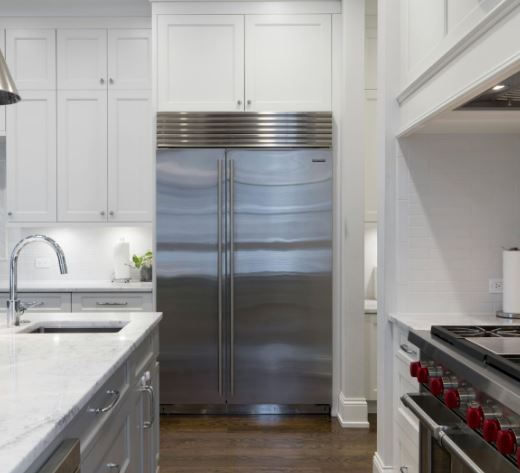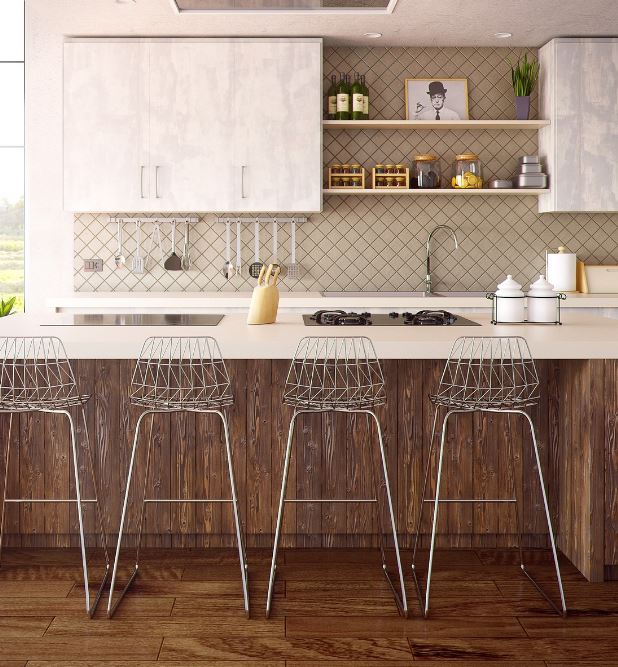Top Tips for Creating a More Functional and Clean Kitchen Space

A kitchen isn’t just a place to cook—it’s where daily life flows. Whether it’s prepping meals for the week, entertaining friends, or sneaking a midnight snack, the kitchen plays a central role in household routines. If it’s cluttered, poorly organized, or hard to navigate, it can easily throw off your rhythm. Transforming it into a more efficient and tidy space makes a noticeable difference—not only in appearance but in how enjoyable and stress-free your day-to-day tasks feel.
Clear Surfaces Start with Clear Systems
A clean counter feels like a breath of fresh air, but keeping it that way is often harder than it sounds. The key lies in the systems behind your storage. If everything has a designated home, it’s much easier to keep surfaces clear. Start by reevaluating what lives on the counter—do those appliances really need to be out? Small changes, like installing under-cabinet hooks or drawer inserts, can reduce visual noise while still keeping tools within easy reach.
Drawer organizers aren’t just for cutlery. Customizable inserts for spices, utensils, and prep tools keep frequently used items accessible without leaving them scattered. This prevents overcrowding and discourages clutter from creeping back in. When storage works around your actual habits, cleanup becomes a natural next step rather than an extra chore.
Keep Frequently Used Items in Prime Locations
Not everything needs to be front and center. But the items you use daily—coffee mugs, pans, cutting boards—shouldn’t require a treasure hunt. The goal is to minimize steps between what you need and where you need it. If you make smoothies every morning, having the blender behind three closed doors and a cereal box isn’t helping anyone.
Think about your daily patterns. Place the most-used items at eye level, with lesser-used equipment higher or lower. Cooking becomes smoother when the flow from prep to stove to sink is seamless. Moving rarely used items out of the main zone frees up valuable space for the things that serve your routine.
Invest in Better Storage Rather Than More Space
Cabinets and drawers can only do so much without thoughtful design. Often, it’s not that you don’t have enough space—it’s that the space isn’t working hard enough. Pull-out shelves, vertical pan racks, and lazy Susans dramatically improve how you access what you already own.
Consider shelf risers for short items like mugs or canned goods, and tension rods inside cabinets to separate baking sheets or lids. These additions don’t require a remodel and often make overlooked nooks more usable. The goal is to reduce stacking and eliminate the black holes where items disappear for years. If your layout still feels cramped or awkward, talking with a kitchen remodeling contractor can help you rethink cabinet access, counter space, and traffic flow. A few targeted upgrades can enhance storage without altering the room’s size.
Lighting Can Change How You Use the Space
Kitchens need layered lighting to be truly functional. Overhead fixtures offer general illumination, but task lighting is what makes cooking safe and comfortable. Installing lights under cabinets brightens prep zones without casting shadows, and it helps define areas throughout the space.
Dimmer switches are underrated. Adjusting the brightness makes the kitchen more versatile—bright for prepping meals, softer for winding down with a cup of tea. Small lighting changes make a significant difference in how often and comfortably the kitchen is used throughout the day.
Don’t Overlook Airflow and Ventilation
Smells from cooking can linger and settle into fabric and surfaces. Good ventilation makes a noticeable difference in air quality, cleanliness, and overall comfort. Range hoods, even compact ones, reduce grease buildup and odors. When shopping, prioritize models with strong suction and quiet operation, especially in open-concept spaces. It helps to click here or at any other reputable website for a premium range hood at a factory-direct price, especially if you’re seeking one that combines performance with aesthetic appeal. A well-placed, efficient unit keeps your space smelling fresh and reduces the need for frequent deep cleaning.
Small Layout Changes with Big Results
Sometimes, even slight adjustments in layout breathe new life into a kitchen. Moving the trash can closer to the prep area or rearranging drawer contents to better match the workflow saves time and reduces frustration. Even swapping the position of a knife block and cutting board can eliminate steps and streamline cooking.

Think about the triangle between the sink, stove, and refrigerator—this layout principle still holds merit. If your setup constantly pulls you across the room, reconfiguring a few zones might improve efficiency without the need for a full remodel.
A beautiful kitchen is nice—but a kitchen that supports your lifestyle is better. Functionality doesn’t mean sacrificing charm or warmth. It means your kitchen responds to your needs, not the other way around. With thoughtful systems, smart layout tweaks, and regular care, your kitchen becomes a space that feels light, clean, and genuinely easy to use.
It’s not about chasing perfection. It’s about creating a space where everything fits into place, both physically and practically. With a bit of strategy and consistency, a more functional and clean kitchen is within reach—without the need for a major overhaul.







